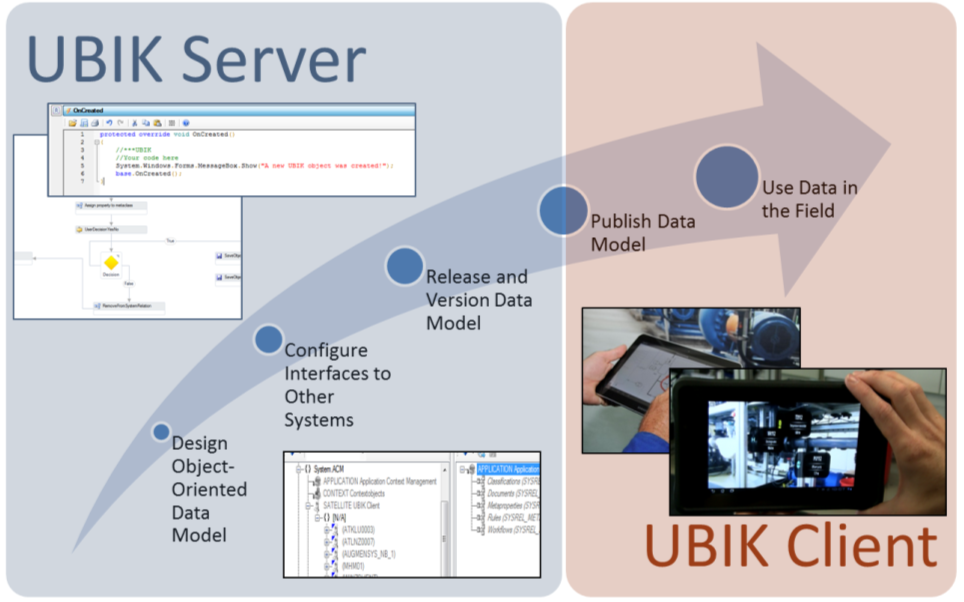Difference between revisions of "What is UBIK"
| Line 2: | Line 2: | ||
It allows the creation of flexible, high performance object models that are capable of consolidating data from almost any sources, either as a onetime effort, on a frequent basis or just on demand whenever it is needed. These models are exposed to a WebService and can be subscribed by {{UBIK}} mobile devices, which crossfade the objects as bubbles into the camera view, based on their geo-position. | It allows the creation of flexible, high performance object models that are capable of consolidating data from almost any sources, either as a onetime effort, on a frequent basis or just on demand whenever it is needed. These models are exposed to a WebService and can be subscribed by {{UBIK}} mobile devices, which crossfade the objects as bubbles into the camera view, based on their geo-position. | ||
| + | |||
| + | [[File:IL_ProjectFlow.png]] | ||
=={{UBIK}} Features== | =={{UBIK}} Features== | ||
Revision as of 20:35, 8 February 2015
UBIK® is a comprehensive product for enabling Augmented Reality supported mobile solutions in industrial environments.
It allows the creation of flexible, high performance object models that are capable of consolidating data from almost any sources, either as a onetime effort, on a frequent basis or just on demand whenever it is needed. These models are exposed to a WebService and can be subscribed by UBIK® mobile devices, which crossfade the objects as bubbles into the camera view, based on their geo-position.
UBIK® Features
Design object-oriented data models
- Use Polymorphism and Inheritance to create UBIK objects
- Define arbitrary Relations between objects
- Program runtime behavior of your objects in native code or visual Workflows
- Configure Views to control how users see the objects
- Compile object model to native code and relational data
- Navigate through data still object-oriented, but with the integrity and performance of an RDBMS
- Deploy to on-premise infrastructure and/or the cloud
- Leverage standard interfaces, i.e. ISO15926
- Create custom interface plugins, to any available source
- Use proxies to control your data versions
- Manage interface behavior and consolidation workflows
- Define contexts for applications and/or roles
- Link contexts to views
- Interact with mobile devices at the push of a button
- Aim mobile device on objects and get information instantly
- Zoom into more detailed information, fast and secure
- Have access to the full published data model of the server
- Edit data in the field and save it back to the server, thus even to the sources
- Record pictures or voice messages and enrich your data input
- Teach in new objects directly in the field, based on your geo-position

